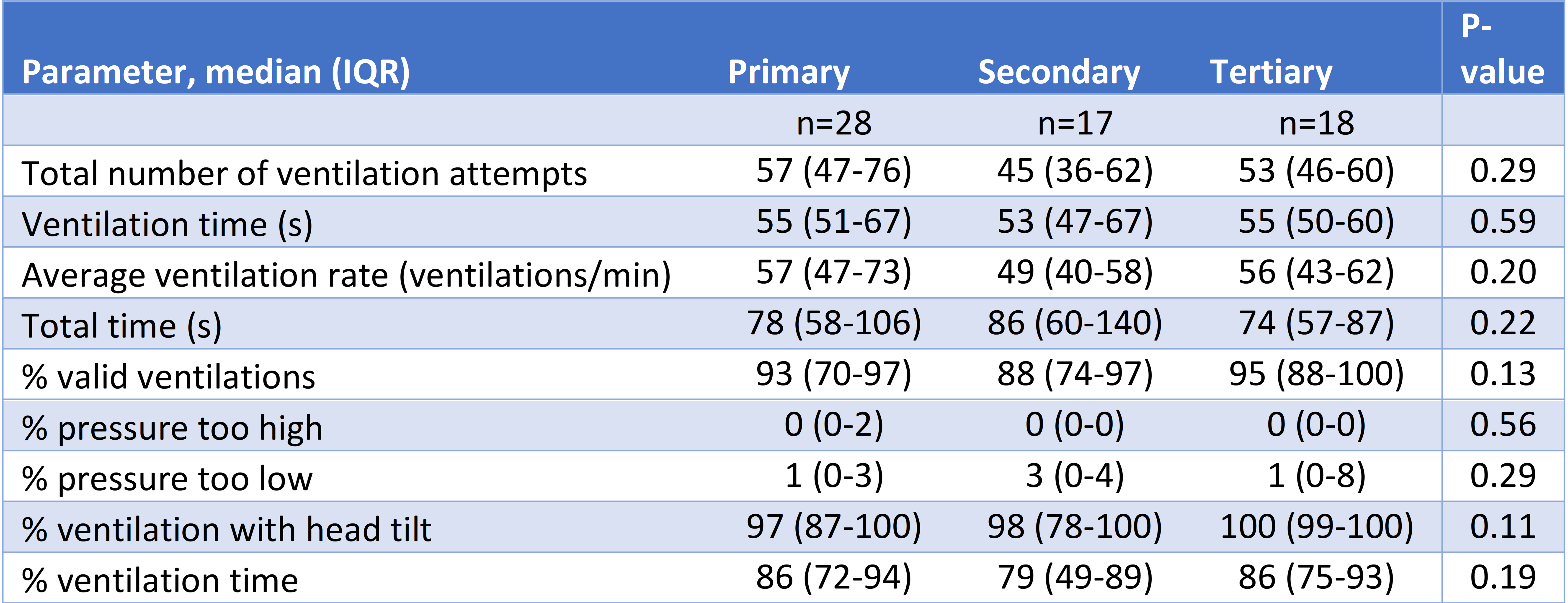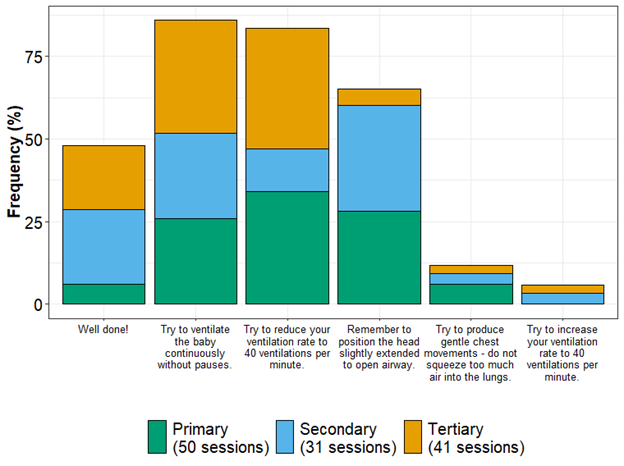Global Neonatal & Children's Health
Global Neonatal & Children's Health 3
540 - Comparable bag and mask ventilation skills performance by birth attendants from primary, secondary and tertiary facilities in Nigeria
Publication Number: 540.409
.jpg)
Rachel Umoren, MBBCh, MS
Associate Professor of Pediatrics
University of Washington School of Medicine
Seattle, Washington, United States
Presenting Author(s)
Background:
One in ten newborns will require resuscitation at birth. Provision of efficient and effective bag mask ventilation to an asphyxiated infant can both decrease the risk of mortality and associated long-term morbidity. Clinical experience, educational experience and access to training, particularly with high-fidelity manikins differ across facility levels of practice (primary, secondary and tertiary) in low resource settings which may result in lower performance particularly in learners at lower level facilities.
Objective:
To compare bag-and-mask ventilation performance among birth attendants at primary, secondary and tertiary facilities in Nigeria using a high-fidelity manikin.
Design/Methods:
In December 2022, 70 healthcare workers from 23 healthcare facilities (14 primary, 7 secondary and 2 tertiary) in Lagos, Nigeria participated in the Virtual Essential Newborn Care (vENC) educational pilot study. Neonatalie Live manikins [Laerdal Medical] were used to assess BMV skills before and after an in-person ENC course. Ventilation rate, pressure, head tilt, and ventilation time and manikin feedback (“well done” or areas for improvement) were collected. Performance across multiple evaluations was averaged per participant to maximize available data. Performance was compared with participant characteristics using the Kruskal-Wallis test or Spearman’s rank correlation.
Results:
Bag and mask ventilation data from 122 sessions were available on 63 participants (28 from primary, 17 from secondary and 18 from tertiary facilities). Participant demographics are shown in Table 1. One-third of participants had prior manikin training experience, mainly with Helping Babies Breathe or Basic Life Support. BMV metrics of ventilation rate, pressure, head tilt and ventilation time did not vary significantly by level of health facility practice (Table 2, p > 0.11) or post-training experience (p > 0.22). Percent of ventilations with a head tilt tended to be higher with greater prior manikin training experience (r = 0.29, p = 0.021). Before training, those with more experience tended to have more valid ventilations (p = 0.002), fewer ventilations with pressure too high (p = 0.057) and fewer ventilations with pressure too low (p = 0.016). Manikin feedback by level of health facility practice is shown in Figure 1.
Conclusion(s):
Bag and mask ventilation performance and manikin feedback did not clearly vary by health facility level of practice. High fidelity manikins can be used in low resource settings to facilitate neonatal resuscitation training and guide post-training follow up in various practice settings.


